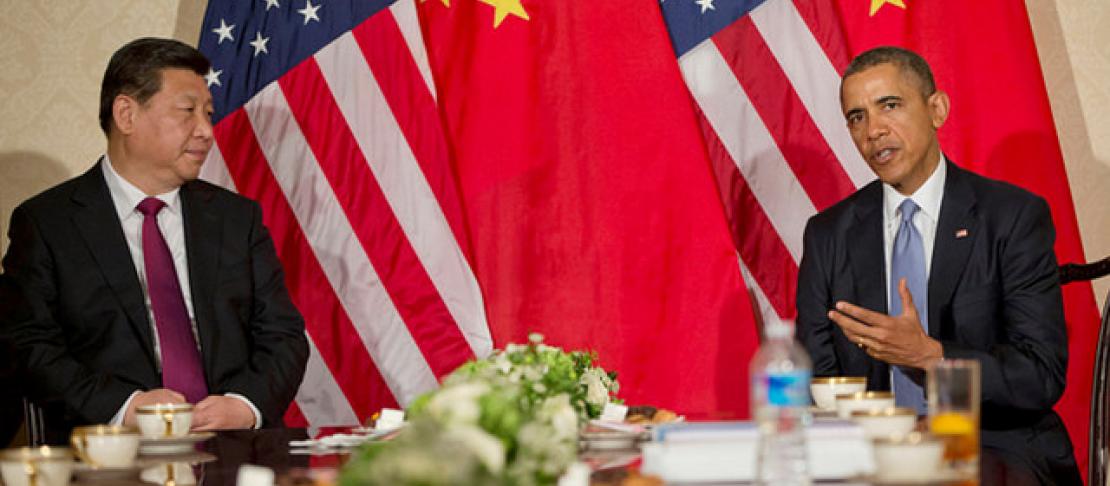Round the world in a nitrogen balloon

Global food chains and increasingly interlinked economies mean countries need to work together to reduce emissions of nitrous oxide, a potent greenhouse gas
Perhaps the biggest surprise China and USA’s recent joint announcement of climate pledges [1] is that they chose to do it together. But could the world’s two largest economies, which together account for 45% of global emissions, achieve major reductions separately? Increasingly interlinked economies suggest not. In 2012 China’s exports embodied 1.5 gigatonnes of emissions [2], while USA’s net imports embodied half a gigatonne, including a good portion from China.
It is not just one-way traffic however. Global food chains and nitrogen cycles tell a more complicated story, as explored in Food and feed trade as a driver in the global nitrogen cycle: 50-year trends [3] by Luis Lassaletta, Gilles Billen, Bruna Grizzetti, Josette Garnier. Allison Leach and James Galloway.
At the start of the 20th century, before the advent of synthetic nitrogen fertilizers, human influence on nitrogen cycles was minor. Today human activities, predominantly fertilizer manufacture and use, generate about four times more reactive nitrogen than natural processes do. Essentially the rise in animal products in our diets means we are increasingly taking inert nitrogen out of the atmosphere and turning it into first fertilizer via energy-intensive manufacture, then livestock feed crops, and finally animal protein for human consumption.
The enormous benefits for human nutrition are balanced against excess deposition of nitrogen compounds that contaminate rivers, seas and air. Nitrous oxide, the “forgotten greenhouse gas”, has 300 times the ability of carbon dioxide to trap atmospheric heat over 100 years. Nitrous oxide emissions from synthetic fertilizers, largely from agricultural soils, grew more than nine-fold between 1961 and 2010, and are set to become the second highest source of agricultural emissions within a decade [4].
According to Lassaletta and co-authors, international trade is now a major biogeochemical process, shifting vast quantities of reactive nitrogen between continents. The largest transfers are of animal feed; in modern supply chains intensive livestock feedlots can be thousands of kilometres from the farms where feed is grown. Dominant exporters of nitrogen in feed and food are Brazil, Argentina, USA and Canada. Countries with high net levels of nitrogen importation include China, Japan, Egypt, Spain, Italy and Mexico. Many African countries are importing increasingly more.
Global patterns of nitrogen flow – and hence responsibilities for emissions reductions – are complicated further by fertilizer trade. For example, 2014 has seen a surge in supply from major fertilizer-producing countries like China and USA, driving higher imports and application of fertilizer in Brazil [5]. Much of the embodied nitrogen may then be re-exported to feed-importing countries such as China, creating complex webs of nitrogen flows across countries and continents.
Smart solutions such as organic or conservation agriculture involve locally produced inputs utilised locally. These circular economies offer high nitrogen use efficiency but at tight scales; worldwide sustainable futures call for larger-scale planning and innovation. We know that international trade offers a key adaptation strategy for food security under climate change [6]. Thus we need smart solutions that address nitrogen (and carbon) cycles as global phenomena, not just on the farm.
References
[1] Schlanger Z. So the U.S. and China Made an Historic Climate Agreement. Now What? Newsweek 12 November 2014.
[3] Lassaletta L, Billen G, Grizzetti B, Garnier J, Leach AM and Galloway JN 2014. Food and feed trade as a driver in the global nitrogen cycle: 50-year trends. Biogeochemistry 118: 225–241. DOI: 10.1007/s10533-013-9923-4
[4] Smith P, Bustamente M, Ahammad H, Clark H, Dong H, Elsiddig E and Tubiello F (2014). Agriculture, forestry and other land use (AFOLU). In: Climate Change 2014: Mitigation of Climate Change. Contribution of Working Group III to the Fifth Assessment Report of the Intergovernmental Panel on Climate Change (eds Edenhofer O, Pichs-Madruga R, Sokona Y, Farahani E, Kadner S, Seyboth K, Adler A, Baum I, Brunner S, Eickemeier P, Kriemann B, Savolainen J, Schlossmer S, Von Stechow C, Zwickel T, Minx J. Pp. 1–179. Cambridge University Press, Cambridge, United Kingdom and New York, NY, USA.
[5] Freitas G and Lima MS 2014. Brazil Fertilizer Imports Surge to Record as Prices Ease. Bloomberg 6 June 2014.
[6] Nelson G, Palazzo A, Ringler C, Sulser T and Batka M. 2009. The role of international trade in climate change adaptation. International Centre for Trade and Sustainable Development (ICTSD), Geneva, Switzerland.
This is the December 2014 edition of AgClim Letters, a regular analysis on science and policy written by Sonja Vermeulen, Head of Research for CCAFS. Sign up to receive AgClim Letters e-bulletin and read past editions. Your comments are welcome below.
